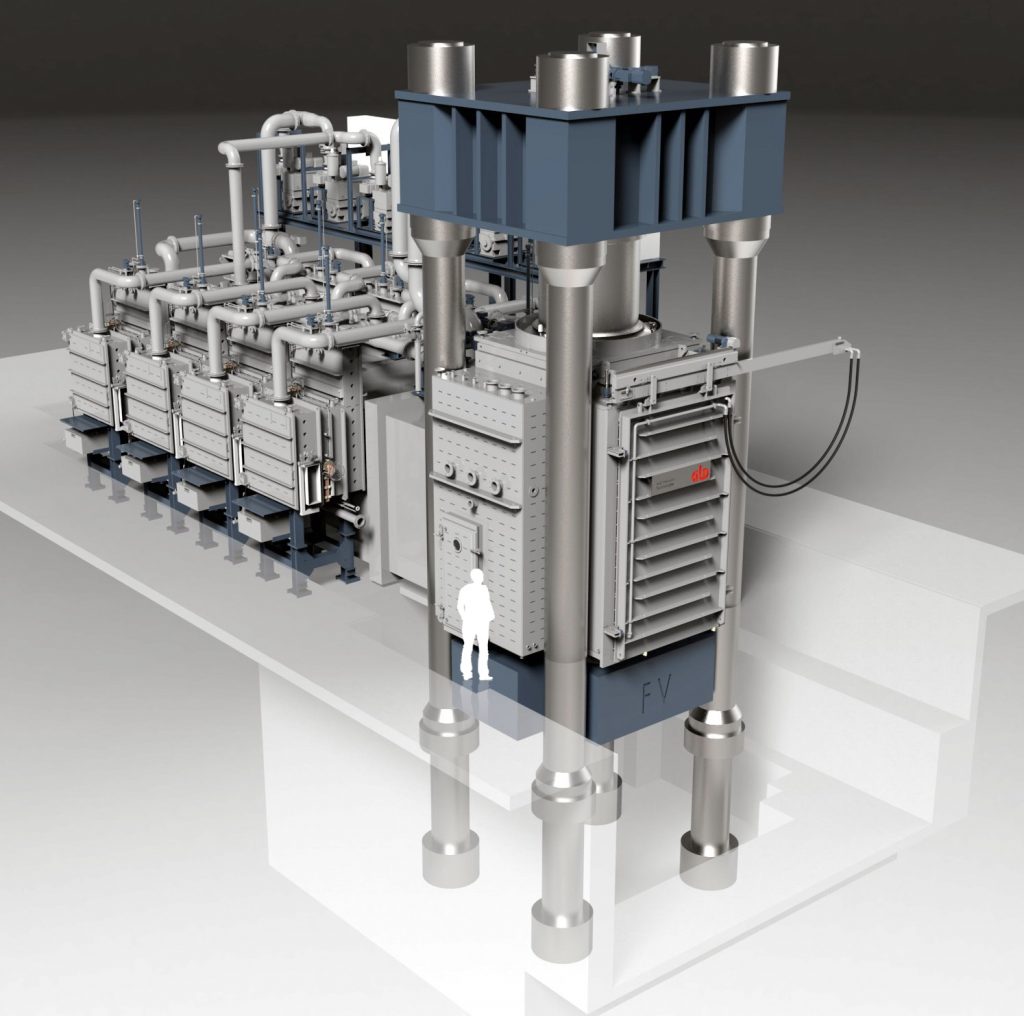HIF Hot Isothermal Forging under Vacuum for near net shape forgings
Hot Isothermal Forging (HIF) became an important technology for producing rotationally symmetric parts in near net shape. It is applied to titanium and superalloys that are hard to shape, used in jet-engine subject to high stress.
If the forging is done under „Superplastic“ conditions, only small stresses occur in the workpiece and the grain-size remains nearly unchanged. Isothermal forging is typically performed at temperatures of 1.050 °C – 1.200 °C in the case of superalloys or 900 °C – 1.050 °C in case of titanium alloys.

Vacuum Hot Isothermal Forging
The HIF Furnace is capable to fulfill today’s highest industrial quality standards and to accomplish future demands of aircraft and energy supply industry, driven from the needs of future challenges.
- Multizone billet heating furnace for homogeneous temperature distribution
- Multizone die-heating system for perfect die preparation
- Precise microprocessor temperature control
- Manipulator tunnel for modular furnace arrangements
- Multi axis manipulator for fully automatic part handling
- Part lock chamber, with external part load and unload system
- Powerful vacuum system and optimized chamber design for shortest cycle times
- Control cabinet with PLC and operator station, equipped with a process visualization system and possible connection to a production management system
- Control cabinet with PLC and operator station, equipped with a process visualization system and possible connection to a production management system
- If required for US customers, motor control center for electrical load distribution, equipped with main circuit breakers, motor starters, control voltage transformer, thyristor-, digital drive- and frequency-controllers
- Custom tailored furnace concept for most economical production
Forging of high-alloyed materials, especially for the aircraft industry, is achieved under vacuum or protective atmosphere. Billets/mults and dies are at the same temperature in order to achive fine grain structure in the forged product the deformation is done at very low speeds.
Parts produced under these “superplastic” conditions ensure compliance with the high quality standards demanded by the aircraft and energy supply industry with high dimensional accuracy and a minimum of reworking.
Besides the production system with a vacuum tunnel also other concepts even for R&D purposes are available.
Contact
Mr. Björn Sehring
T: + 49 6181 307 3341
E: Bjoern.Sehring@ald-vt.de
Mr. Jürgen Hotz
T: +49 6181 307 3228
E: Juergen.Hotz@ald-vt.de
Mr. Stefan Kunkel
T: +49 6181 307 3252
E: Stefan.Kunkel@ald-vt.de
